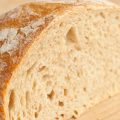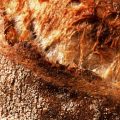Discover the joy of baking a Herman cake in today’s recipe. This classic sourdough friendship cake has been a beloved treat for generations, and now you can learn creating it yourself. Together, we’ll ensure your Herman cake turns out perfectly enough to share with friends – new and old!
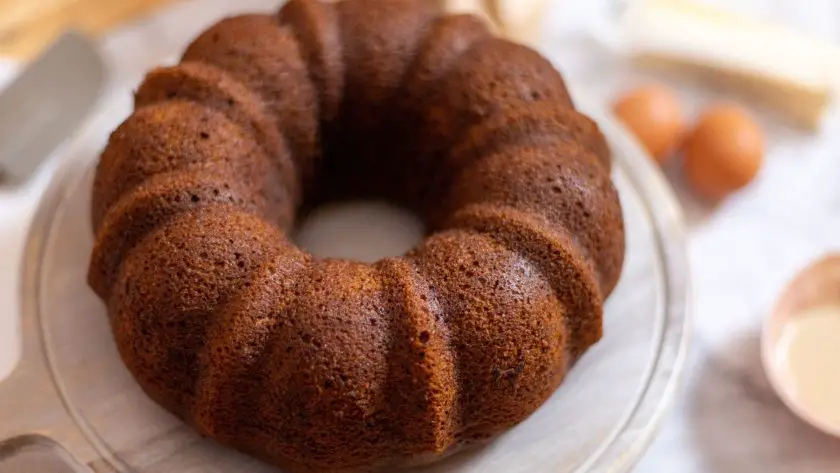
Table of Contents
- Ingredients
- Making the Herman Starter
- Making the Herman Cake
- Variations of Herman Cake
- Decorating and Serving Suggestions
- Storing and Sharing Herman Cake
- Troubleshooting Common Issues
- Make Friends with Cake!
- How to Make Herman Cake: FAQs
Ingredients
To make a delicious Herman cake, you’ll need two sets of ingredients – one for the starter and another for the cake itself.
Let’s break it down:
Herman Starter Ingredients
- 1 cup all-purpose flour
- 1 cup granulated sugar
- 1 cup whole milk
- 1 package active dry yeast (2 1/4 teaspoons)
Cake Ingredients
- 2 cups all-purpose flour
- 1 cup granulated sugar
- 2/3 cup vegetable oil
- 2 large eggs
- 2 teaspoons vanilla extract
- 1 teaspoon baking soda
- 1 teaspoon ground cinnamon
- 1/2 teaspoon salt
- 1 cup Herman starter
- 1 cup chopped nuts (optional)
- 1 cup raisins (optional)
Making the Herman Starter
Before you can bake your delectable Herman cake, you’ll need to create the starter that gives it its unique flavor and texture. This process takes a little patience, but it’s absolutely worth the wait!
Combining the Starter Ingredients
In a large non-metallic bowl, mix 1 cup of all-purpose flour, 1 cup of granulated sugar, and 1 package of active dry yeast (2 1/4 teaspoons). Gradually stir in 1 cup of whole milk until the mixture is smooth and lump-free.
Letting the Starter Ferment
Cover the bowl loosely with a clean dish towel or plastic wrap and let it sit at room temperature (around 70°F or 21°C) for 24 hours. During this time, the yeast will work its magic, causing the mixture to bubble and develop a slightly sour, fermented aroma.
Feeding the Starter
For the next 4 days, you’ll need to “feed” your Herman starter daily. Each day, add 1/2 cup each of flour, sugar, and milk to the mixture and stir well. Replace the cover and let it continue to ferment at room temperature.
By the fifth day, your Herman starter should have a pleasantly sour smell and be full of bubbles – that’s how you know it’s ready to use in your cake! If you’re not ready to bake just yet, you can store the starter in the refrigerator until needed, feeding it weekly with the same 1/2 cup additions of flour, sugar, and milk.
Making the Herman Cake
Now that your Herman starter is ready, it’s time to whip up a delectable cake that will have your taste buds dancing with joy. Let’s begin creating this unique and flavorful treat.
Preparing the Batter
In a large mixing bowl, combine 2 cups of all-purpose flour, 1 cup of granulated sugar, 1 teaspoon of baking soda, 1 teaspoon of ground cinnamon, and 1/2 teaspoon of salt. Give these dry ingredients a good whisk to ensure they’re evenly distributed.
In a separate bowl, mix 2/3 cup of vegetable oil, 2 large eggs, 2 teaspoons of vanilla extract, and 1 cup of your bubbly Herman starter. Beat these wet ingredients until they’re well combined and slightly frothy.
Gradually pour the wet mixture into the dry ingredients, stirring gently until a smooth batter forms. If you’re feeling adventurous, now’s the time to fold in 1 cup each of chopped nuts and raisins for added texture and sweetness.
Baking to Perfection
Preheat your oven to 350°F (175°C) and grease a 9×13 inch baking pan or two 9-inch round cake pans. Pour the batter evenly into the prepared pan/s (bundt-shaped for the iconic cake dome!) and smooth the top with a spatula.
Place the pan(s) in the center of the preheated oven and bake for 35-40 minutes for a 9×13 inch pan, or 25-30 minutes for 9-inch round pans. To check if your cake is done, insert a toothpick into the center – if it comes out clean or with just a few moist crumbs, your Herman cake is ready to be taken out of the oven.
Cooling and Serving
Allow the cake to cool in the pan for about 10 minutes before transferring it to a wire rack to cool completely. This will ensure that your cake maintains its structure and doesn’t crumble when you slice into it.
Once cooled, feel free to dust the top with powdered sugar or drizzle on a simple glaze made from 1 cup of powdered sugar mixed with 1-2 tablespoons of milk. Serve your Herman cake alongside a cup of coffee or tea, and savor the delightfully tangy, sweet, and tender result of your baking adventure.
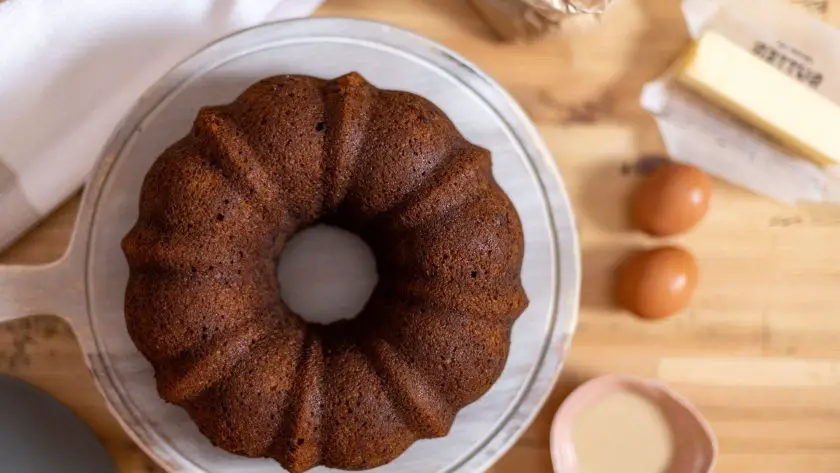
Variations of Herman Cake
There is a whole delicious world of variations for this cake! You can create a whole new experience while still enjoying the tangy, tender goodness of your Herman starter.
Fruity Flavors
One of the easiest ways to change up your Herman cake is by incorporating fresh or dried fruits. Try folding in 1 cup of diced apples and an extra 1/2 teaspoon of cinnamon for a cozy autumn treat, or mix in 1 cup of dried cranberries and the zest of one orange for a bright, tangy twist.
For a burst of summer sweetness, gently stir 1 cup of fresh blueberries or raspberries into the batter just before baking. Be sure to toss the berries with a tablespoon of flour first to prevent them from sinking to the bottom of the pan.
Nutty Delights
If you’re a fan of nutty flavors and textures, your Herman cake is the perfect canvas. Fold in 1 cup of chopped walnuts, pecans, or almonds for a satisfying crunch in every bite. For an even more indulgent treat, try toasting the nuts in a dry skillet over medium heat until fragrant before adding them to the batter.
Another delicious option is to sprinkle a generous handful of chopped nuts over the top of the batter before baking, creating a crunchy, golden-brown topping that perfectly complements the tender cake beneath.
Chocolate Lover’s Dream
For those who can’t resist the allure of chocolate, there are plenty of ways to infuse your Herman cake with rich, cocoa-laden goodness. Fold in 1 cup of semi-sweet chocolate chips or chopped dark chocolate for a classic flavor combo, or swirl in 1/2 cup of Nutella or chocolate-hazelnut spread for an extra indulgent treat.
If you’re feeling particularly decadent, try adding 1/4 cup of unsweetened cocoa powder to the dry ingredients and increasing the sugar by 1/4 cup for a full-on chocolate explosion. Top the finished cake with a dusting of powdered sugar or a drizzle of chocolate glaze for the ultimate sweet finale.
Decorating and Serving Suggestions
Here are some ideas to add finishing touches and present your cake in a way that will make your guests’ mouths water. Decorate and serve your delectable creation with these:
Frosting Options
While Herman cake is delicious on its own, a little frosting can take it to the next level. Whip up a batch of cream cheese frosting for a tangy twist that complements the cake’s flavor. Simply beat together 8 ounces of softened cream cheese, 1/2 cup of softened butter, 2 cups of powdered sugar, and 1 teaspoon of vanilla extract until smooth and creamy.
If you prefer a lighter touch, dust the top of the cake with a generous sprinkle of powdered sugar. This simple decoration adds a touch of elegance and lets the cake’s natural flavors shine through.
Presentation Tips
When it comes to serving your Herman cake, presentation is key. Start by choosing a beautiful serving plate that will showcase your cake’s rustic charm. A wooden cake stand or a vintage-inspired platter will do the trick nicely.
Just before serving, garnish the cake with a few fresh berries or a sprinkle of lemon zest for a pop of color and added flavor. If you’ve opted for cream cheese frosting, use a piping bag to create elegant swirls or rosettes on top of the cake.
For a fun and interactive serving idea, set up a DIY Herman cake bar. Slice the cake into squares and let your guests customize their own pieces with an array of toppings like chopped nuts, fresh fruit, whipped cream, and caramel sauce.
Storing and Sharing Herman Cake
Storing Your Herman Cake
Once your Herman cake has cooled completely, it’s time to store it properly to maintain its freshness and flavor. Follow these simple steps to keep your cake in tip-top shape:
- Wrap the cake tightly in plastic wrap or aluminum foil, ensuring no air can get in and dry out the cake.
- Place the wrapped cake in an airtight container, such as a Tupperware or a cake tin with a tight-fitting lid.
- Store the container in a cool, dry place away from direct sunlight. Your Herman cake will stay fresh at room temperature for up to 5 days.
- If you want to keep your cake for longer, you can store it in the refrigerator for up to 2 weeks or in the freezer for up to 3 months. Just be sure to wrap it extra securely to prevent freezer burn.
Sharing Your Herman Starter
One of the joys of making Herman cake is sharing the love with friends and family. Here’s how to share your Herman starter so others can experience the deliciousness:
- Set aside 1 cup of your active Herman starter in a clean, non-metallic container with a lid.
- Include a copy of the Herman cake recipe and instructions for feeding and maintaining the starter.
- Give your friend or family member the starter and instructions, emphasizing the importance of feeding it regularly to keep it alive and bubbly.
- Encourage them to bake their own Herman cake within 10 days of receiving the starter, and to share the starter with others to keep the tradition going.
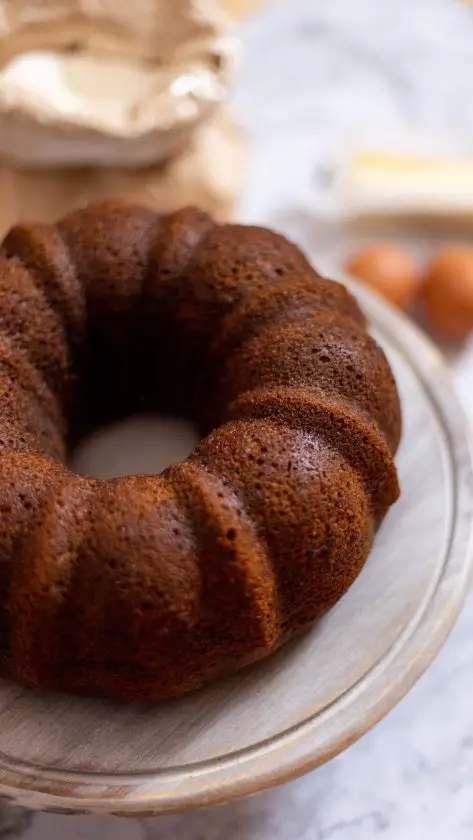
Troubleshooting Common Issues
Even the most experienced bakers can run into problems when making Herman cake. Don’t worry – we’ve got you covered with these handy tips for troubleshooting common issues.
Underbaked Cake
If your Herman cake comes out of the oven looking pale and feeling dense or gummy, it’s likely underbaked. To avoid this, make sure to:
- Preheat your oven fully before baking, and check the temperature with an oven thermometer for accuracy.
- Test the cake’s doneness by inserting a toothpick into the center – it should come out clean or with just a few moist crumbs.
- If the top is browning too quickly but the center isn’t done, cover the cake loosely with aluminum foil and continue baking.
Starter Not Fermenting
If your Herman starter isn’t bubbling and fermenting after the initial 24 hours or during the feeding process, there could be a few reasons why:
- Check the expiration date on your yeast – old or expired yeast won’t activate properly.
- Make sure you’re using whole milk, as the fat content is necessary for the yeast to feed on.
- Ensure your starter is being kept at room temperature (around 70°F/21°C) during the fermentation process.
- If your starter develops mold or an off-putting smell, discard it and start again with fresh ingredients.
Fixing Dense or Dry Cake
If your Herman cake turns out dense or dry, it may be due to overmixing the batter or using too much flour. Remember to:
- Mix the batter just until the ingredients are combined – overmixing can lead to a tough, dense cake.
- Measure your flour by spooning it into the measuring cup and leveling it off with a knife, rather than scooping it directly from the bag.
- If your cake is dry, try brushing the layers with simple syrup or milk before frosting to add moisture.
Make Friends with Cake!
Making a Herman cake is a rewarding experience. It’s fairly easy, and the adaptable recipe allows for customization with various mix-ins. The resulting cake can be deliciously enjoyed with your loved ones!
How to Make Herman Cake: FAQs
Why is the sourdough starter called Herman?
Sourdough starter is sometimes affectionately referred to as “Herman” because it requires regular feeding and attention, similar to a pet. The name “Herman” likely originated from the idea of the starter being a living, growing entity that needs care. However, not all sourdough starters are called Herman, and the name is more of a playful nickname than a universal term.
What is a Herman?
A “Herman” is a nickname given to a sourdough starter, which is a fermented mixture of flour and water containing wild yeast and bacteria. This starter is used to leaven and flavor bread, particularly sourdough. The term “Herman” is an anthropomorphization of the starter, treating it as a living pet that requires regular feeding and attention to maintain its health and vitality.
How to bake a cake step by step for beginners?
To bake a cake:
– Gather ingredients and preheat the oven.
– Grease and flour the cake pan.
– Cream butter and sugar, then add eggs one at a time.
– Alternately add dry ingredients and milk, mixing until combined.
– Pour batter into the prepared pan and bake until a toothpick inserted comes out clean.
– Cool, then frost and decorate as desired.
Why is it called friendship cake?
Friendship cake, also known as Amish Friendship Bread, is called so because the starter is often shared among friends. The starter is passed along with a portion of the cake, allowing the recipient to continue the cycle by baking their cake and sharing the starter with others. This tradition promotes a sense of community and connection, hence the name “friendship cake.”
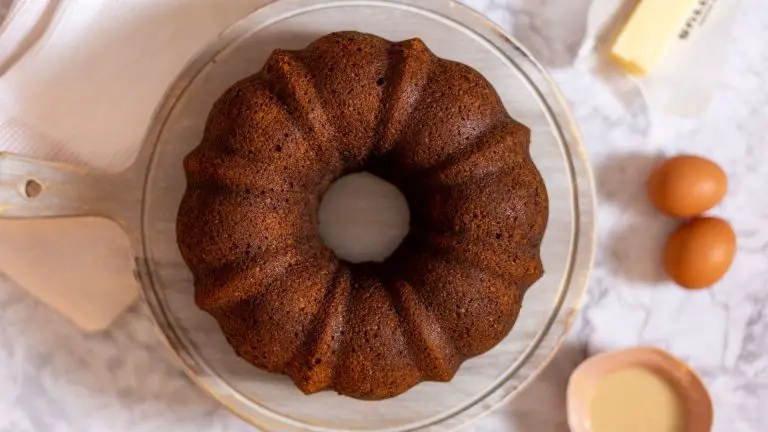
Herman Cake + Starter Recipe
This friendship cake is easy and lovely to share with your friends!
- Yield: 1 cake 1x
Ingredients
Starter
- 1 cup all-purpose flour
- 1 cup granulated sugar
- 1 cup whole milk
- 1 cup active sourdough starter
Cake Ingredients
- 2 cups all-purpose flour
- 1 cup granulated sugar
- 2/3 cup vegetable oil
- 2 large eggs
- 2 teaspoons vanilla extract
- 1 teaspoon baking soda
- 1 teaspoon ground cinnamon
- 1/2 teaspoon salt
- 1 cup Herman sourdough starter
- 1 cup chopped nuts (optional)
- 1 cup raisins (optional)
Instructions
Making the Herman Starter
- In a large non-metallic bowl, mix 1 cup all-purpose flour, 1 cup granulated sugar, and 1 package active dry yeast (2 1/4 teaspoons).
- Gradually stir in 1 cup whole milk until smooth and lump-free.
- Cover the bowl loosely with a clean dish towel or plastic wrap and let it sit at room temperature (around 70°F or 21°C) for 24 hours.
- For the next 4 days, feed the starter daily by adding 1/2 cup each of flour, sugar, and milk to the mixture. Stir well, replace the cover, and let it ferment at room temperature.
- By the fifth day, the Herman starter should be bubbly and have a pleasantly sour smell, indicating it’s ready to use.
Making the Herman Cake
- In a large bowl, whisk together 2 cups all-purpose flour, 1 cup granulated sugar, 1 teaspoon baking soda, 1 teaspoon ground cinnamon, and 1/2 teaspoon salt.
- In a separate bowl, mix 2/3 cup vegetable oil, 2 large eggs, 2 teaspoons vanilla extract, and 1 cup Herman starter until well combined and slightly frothy.
- Gradually pour the wet mixture into the dry ingredients, stirring gently until a smooth batter forms. Optional: fold in 1 cup each of chopped nuts and raisins.
- Preheat oven to 350°F (175°C) and grease a 9×13 inch baking pan or two 9-inch round cake pans.
- Pour batter evenly into prepared pan(s) and smooth the top with a spatula.
- Bake for 35-40 minutes (9×13 inch pan) or 25-30 minutes (9-inch round pans) until a toothpick inserted into the center comes out clean or with a few moist crumbs.
- Allow the cake to cool in the pan for 10 minutes before transferring to a wire rack to cool completely.
Notes
- Once cooled, feel free to dust the top with powdered sugar or drizzle on a simple glaze made from 1 cup of powdered sugar mixed with 1-2 tablespoons of milk.
- Serve your Herman cake alongside a cup of coffee or tea, and savor the delightfully tangy, sweet, and tender result of your baking adventur
- Cuisine: American

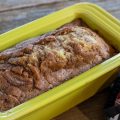
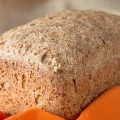
![Soft Sourdough Bread [Easy Recipe + Tips] 151 Soft sourdough bread [easy recipe]](https://www.mydailysourdoughbread.com/wp-content/uploads/2024/02/Soft-Sourdough-Bread-120x120.jpg)
